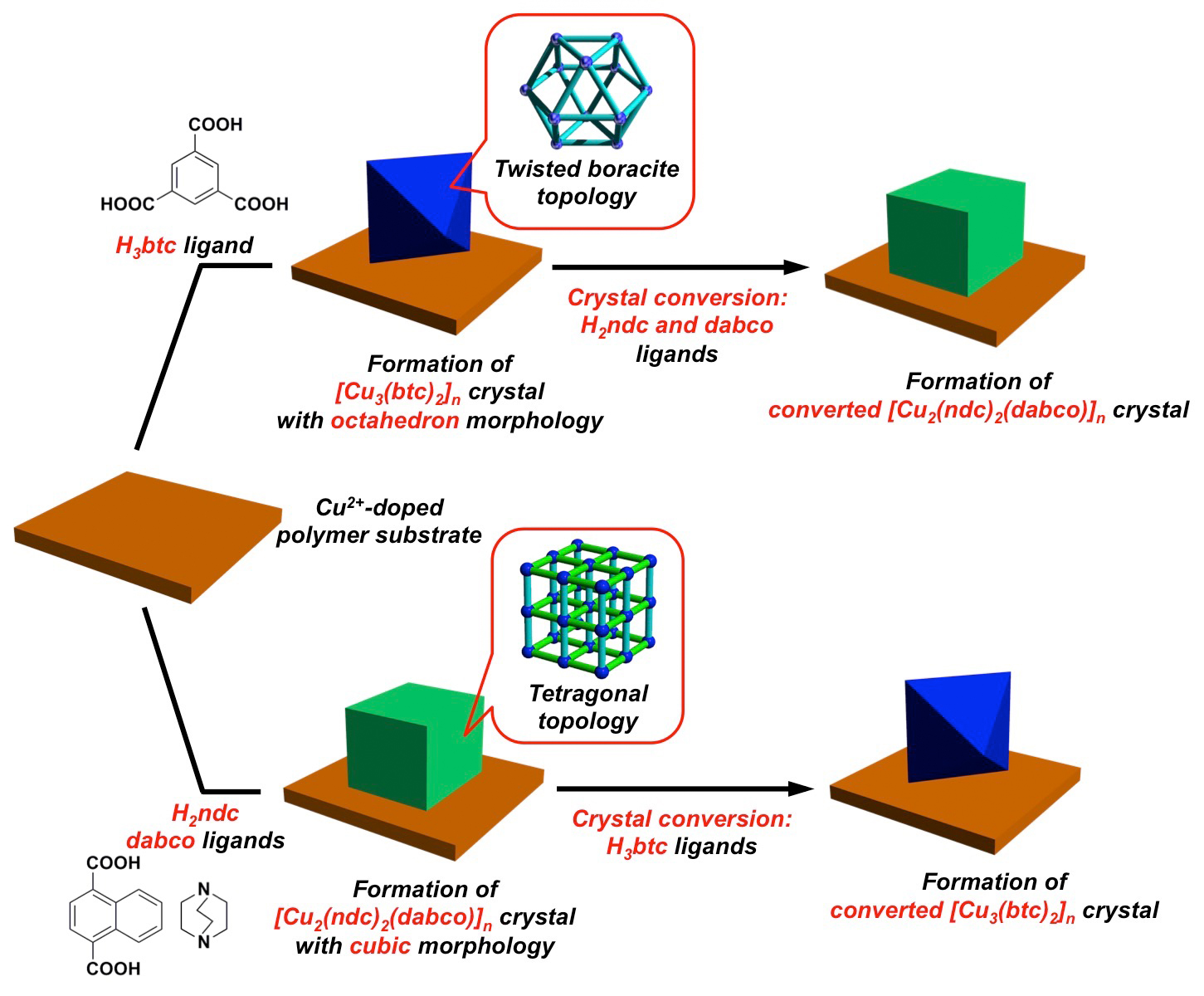J. Cryst. Growth 2018, 487, 1−7
Crystal Conversion Between Metal-Organic Frameworks with Different Crystal Topologies for Efficient Crystal Design on Two-Dimensional Substrates
Takaaki Tsuruoka,* Kohei Inoue, Ayumi Miyanaga, Kaho Tobiishi, Takashi Ohhashi, Manami Hata, Yohei Takashima, and Kensuke Akamatsu*
Crystal conversion of metal-organic frameworks (MOFs) between different crystal topologies on a polymer substrate has been successfully achieved by localized dissolution of MOF crystals followed by a rapid self-assembly of framework components. Upon addition of the desired organic linkers to the reaction system containing MOF crystals on the substrate, reversible crystal conversion between the [Cu2(btc)3]n and [Cu2(ndc)2(dabco)]n frameworks (btc = 1,3,5-benzene tricarboxylate, ndc = 1,4-naphthalene dicarboxylate, dabco = 1,4-diazabicyclo[2.2.2]octane) could be routinely achieved in high yields. Most surprisingly, in the case of conversion from the [Cu2(ndc)2(dabco)]n to [Cu2(btc)3]n frameworks, the [Cu2(btc)3]n crystals with unique shapes (cuboctahedron and truncated cube) could be prepared using butanol as a reaction medium.
